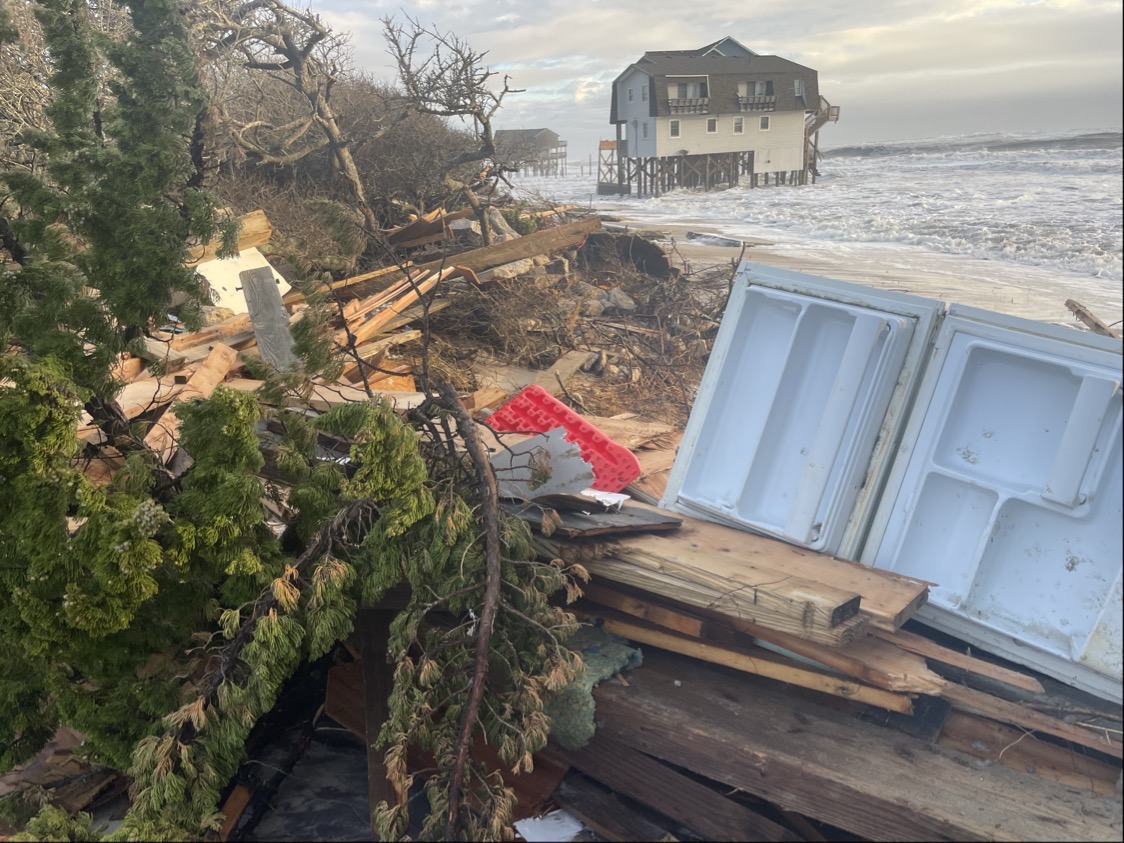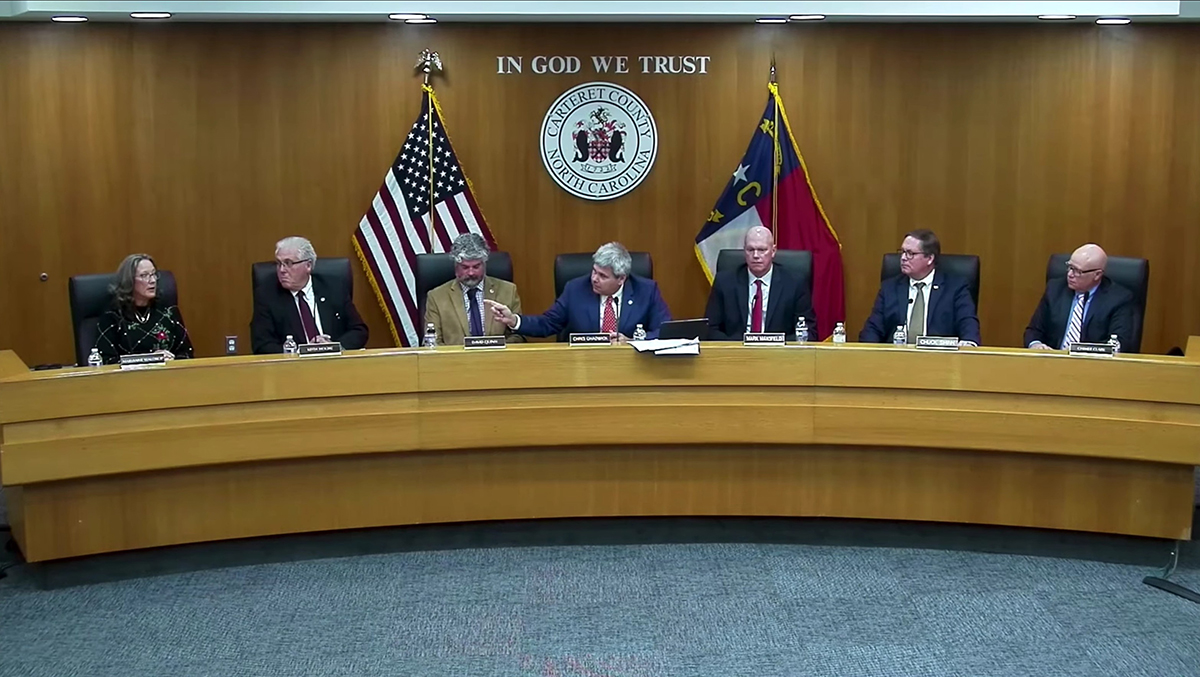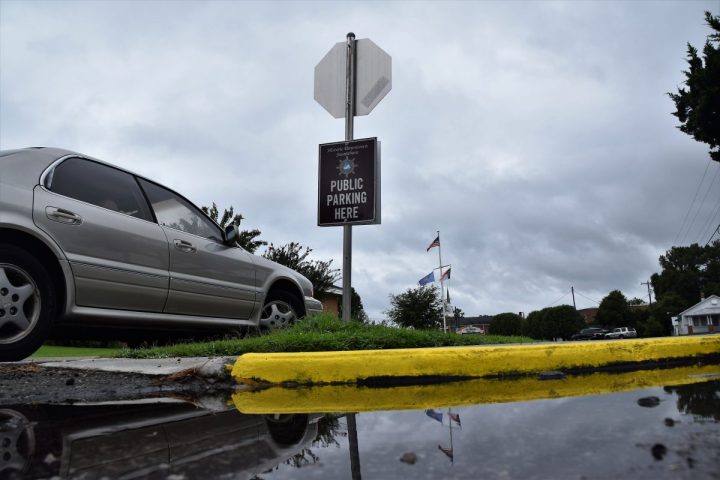
Reprinted from the Tideland News
SWANSBORO — It is the classic case of taking down two birds with one stone. In one sprawling project, Swansboro will add dozens of public parking spaces within easy walking distance of downtown and reduce the amount of untreated stormwater runoff reaching the nearby White Oak River.
Supporter Spotlight
Making the project even sweeter is the fact that the town will be getting financial assistance in the form of a Section 319 grant, federal funds distributed by the North Carolina Division of Environmental Quality.
“We’ve just received word that we’ve been awarded the grant,” Scott Chase, town manager, said during the last week of July.

The project will add 70 parking spaces and retrofit the town hall campus for better stormwater treatment. It is estimated to cost $284,130. The town was awarded $172,397 in Environmental Protection Agency funds.
Notification came at a very good time, according to Chase. Because, even though the grant “doesn’t come online until January,” knowing now means that work to complete the recent Swansboro Public Safety sleeping quarters project can be upgraded to fit into the goal of the stormwater reduction plans. And that work, including labor and materials, Chase said, can be counted toward the town’s required grant match.
The North Carolina Coastal Federation led the town through the grant application, according to Chase.
Supporter Spotlight
“We met with Coastal Federation onsite … we’re wrapping up the public safety facility … and got guidance from them,” he said. “Ultimately, we are going to have a bio-retention area … that will be part of the stormwater plan.”
“This (work on the Public Safety Facility) will make sure we don’t have to go back and retrofit anything.”
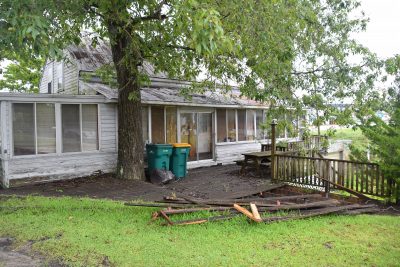
The project involves the town buying a vacant 1,200-square-foot house adjoining the town hall campus and next to the fire department, just off N.C. 24. And, other than the purchase price of the house and property – which is still in negotiation – any costs related to the development of the site could be counted toward the match. The property purchase and demolition has been estimated to cost $95,000.
Chase said town crews would do much of the work.
Furthermore, Chase has been in touch with David Cotton, Onslow County manager, concerning the disposal of debris from the home, which will be razed. Chase requested that the cost of disposing of the debris – the “tipping fee” – be waived.
In addition to creating a bio-retention area to capture and treat stormwater runoff, the project includes adding 40 new parking spaces and re-configuring the current spaces to create another 30. Because the project will mean more parking for downtown visitors, the Onslow County Tourism Development Authority found it worthwhile enough to approve a contribution of $17,500, which will count toward the town’s match.
“This is a huge benefit for our campus area … and downtown,” Chase said.
Chase presented the project, dubbed Stormwater Volume Reduction at the Town of Swansboro Municipal Complex, to the state officials considering grant requests in July. Joining him were Lauren Kolodij, deputy director of the coastal federation, and Bree Tillett, engineer intern and coastal specialist with the federation.
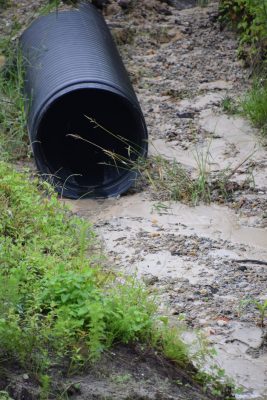
The presentation provided a look at the federation’s overall stormwater strategy:
- Working in urban and rural landscapes.
- Using low-impact development techniques.
- Slowing down the flow of stormwater runoff and directing it to soak in.
- Reducing the volume reaching surface waters, thereby reducing the pollutant load.
It pointed out that state officials support the strategy and included a statement from Mike Randall of the stormwater permitting program with the North Carolina Division of Energy, Mineral and Land Resources. The Division of Environmental Quality, it states, “places a premium on reducing stormwater runoff by infiltrating stormwater into the landscape using cost effective solutions.”
“If you can eliminate stormwater runoff you won’t have to treat it,” Randall states.
Swansboro strategy, made official with a watershed management plan approved in March, matches speaks to this goal.
The town, according to the grant presentation, aims to “turn back the clock” on water pollution. Using shellfish water closings as a gauge, the goal is to lower the amount of untreated stormwater runoff to a time when more shellfish waters were open.
This is accomplished by reducing instances of flooding, aligning future capital improvements with stormwater retrofits, increasing community awareness and positioning the town for future funding opportunities for implementation, according to the presentation.
In addition to retrofits on public properties, the town plan encourages the installation of voluntary retrofits on private properties, tracks progress and monitors incremental improvement in stormwater runoff volume reduction.
The Stormwater Volume Reduction at the Town of Swansboro Municipal Complex, the town will incorporate low-impact development and green infrastructure techniques into a town capital works project that will result in a public amenity for the town that reduces locally generated stormwater runoff.
This work aims to reduce stormwater runoff volume in the White Oak River historic sub watershed by 87,700 gallons for the one-year storm, or 3.5 inches.
And it will increase awareness of and demand for low-impact development stormwater management techniques by installing signage, encouraging media coverage, offering tours to demonstrate stormwater reduction techniques, coordinating with Onslow Soil and Water Conservation District to promote grant incentives to landowners and businesses, educating students about stormwater runoff, water quality problems and management options and field experiences.
Chase told town commissioners of the award at the July 11 board meeting.
“We’re really proud of this,” he said.
Commissioner Frank Tursi, also the former editor of Coastal Review Online, said he, too, was proud of Swansboro.
“I know this will be the first of many,” Tursi said. And, he added, “We are stressing stormwater control.” In fact, the town is setting an example by being a good steward. “We have to walk the walk.”
This story is provided courtesy of the Tideland News, a weekly newspaper in Swansboro. Coastal Review Online is partnering with the Tideland to provide readers with more environmental and lifestyle stories of interest about our coast. You can read other stories about the Swansboro area here.




